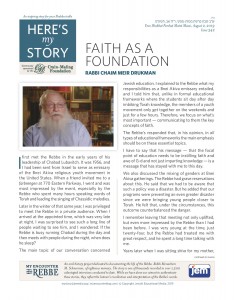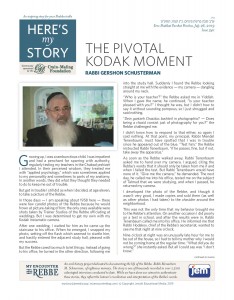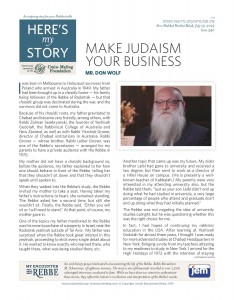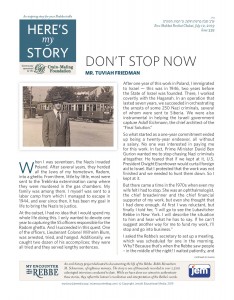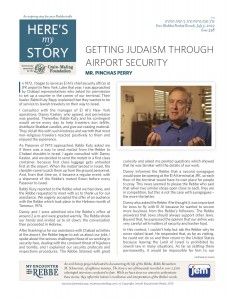Faith as a Foundation
I first met the Rebbe in the early years of his leadership of Chabad Lubavitch. It was 1956, and I had been sent from Israel to serve as emissary of the Bnei Akiva religious youth movement in the United States. When a friend invited me to a farbrengen at 770 Eastern Parkway, I went and was most impressed by the event, especially by the Rebbe who spent many hours speaking words of Torah and leading the singing of Chassidic melodies.
Later in the winter of that same year, I was privileged to meet the Rebbe in a private audience. When I arrived at the appointed time, which was very late at night, I was surprised to see such a long line of people waiting to see him, and I wondered: If the Rebbe is busy running Chabad during the day and then meets with people during the night, when does he sleep?
The main topic of our conversation concerned Jewish education. I explained to the Rebbe what my responsibilities as a Bnei Akiva emissary entailed, and I told him that, unlike in formal educational frameworks where the students sit day after day imbibing Torah knowledge, the members of a youth movement only get together on the weekends and just for a few hours. Therefore, we focus on what’s most important – communicating to them the key concepts of faith.
The Rebbe’s responded that, in his opinion, in all types of educational frameworks the main emphasis should be on these essential topics.
I have to say that his message – that the focal point of education needs to be instilling faith and awe of G-d and not just imparting knowledge – is a message that has stayed with me to this day.
We also discussed the mixing of genders at Bnei Akiva gatherings. The Rebbe had grave reservations about this. He said that we had to be aware that such a policy was a disaster. But he added that our programs were preventing an even greater disaster since we were bringing young people closer to Torah. He felt that, under the circumstances, this outcome counterbalanced the danger. (more…)


